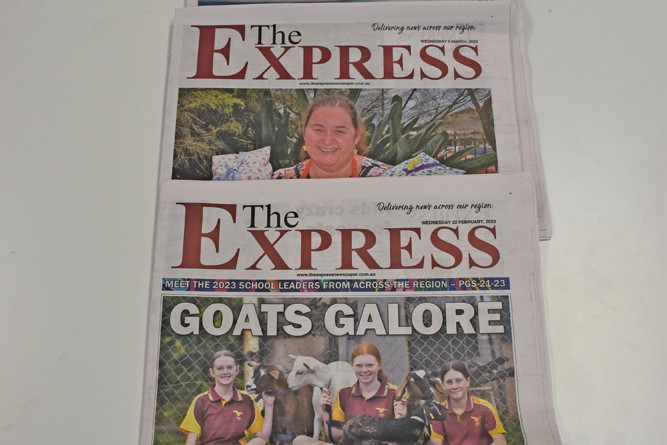General News
8 April, 2023
Report proves papers vital to communities
PRINT newspapers are far from dead, and all levels of government are being urged to support local papers with advertising, a new national report has found.

The report challenges the perception that print newspapers are dead and is calling on governments to revise their advertising rules to help local news providers and better target regional and rural communities.
The Media Innovation and the Civic Fu-ture of Australia’s Country Press report is the culmination of a three-year Australian Research Council project, led by Deakin University, in partnership with Country Press Australia, the nation’s peak local news lobby, and RMIT University.
Project lead Professor Kristy Hess, of Deakin’s School of Communications and Creative Arts, said the project’s aim was to examine the local media landscape to identify challenges and opportunities for sustainability and innovation.
COVID IMPACT
The study began at the start of the COVID-19 pandemic, which resulted in the temporary or permanent closure of dozens of local mastheads across Australia and a shift among some to digital-only platforms.
“The first thing we did was conduct a major national survey to find out what people valued about their local mastheads. We found people in many regional and ru-ral towns and cities were passionate about their local mastheads but rejected an over-reliance on syndicated content, in print and digital, sourced from neighbouring areas or other parts of the country,” Prof Hess said.
The research team conducted two main national surveys – one with local news
audiences and one with those who do not engage with local news; 35 interviews with Australian news editors and proprietors; and seven interpretive focus groups with editors, journalists and advertising managers within the Country Press Australia network.
LOST REVENUE
One key finding was the strain on local mastheads hit with lost revenue from local, state and federal government advertising, which in recent years had prioritised social media and metropolitan news outlets with a larger digital reach.
“Our research found there is this obsession with digital reach. That’s all well and good, but a local masthead, whether in print or online, isn’t designed to reach one million people,” Prof Hess said.
“If we use the digital reach metric as an indicator as to which news outlets should get government advertising, these inde-pendent regional and rural outlets are going to lose out every time.”
The report supports a recent Parliamentary Inquiry recommendation that stipulates 20 per cent of all Federal Government advertising expenditure be directed to regional and rural news organisations.
DIGITAL FOCUS
Data from the study also showed government funding schemes for local news outlets were often tied to digital innovation, for instance to buy drones and other technologies, when what local news providers needed was financial support to upgrade print infrastructure or to hire more staff.
“Print is not dead for many regional and rural communities. We need to remember there is a digital divide in Australia that means some communities still struggle with poor-quality and unreliable Internet connections,” Prof Hess said.
“Some segments of the community, including older citizens, find it difficult to use newer technologies. Younger audiences also like the look of a printed newspaper.”
The report also recommends better incentives, including pay, to attract seasoned reporters to the regions. Governments are also urged to provide seed funding for journalist-led news start-ups to counteract local ‘news deserts’ developing in some parts of Australia.
“Our research shows people in these communities want more local news content, including stories on locals’ achievements, successes and milestones,” Prof Hess said.
“They also want news on local events and more investigative-type pieces.
“We also found there is more capacity for regional and rural news providers to develop collaborative advocacy and solutions-style reporting campaigns that address im-portant rural and regional issues that span multiple communities.”


